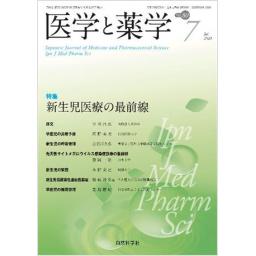1) e-Stat政府統計の総合窓口, 人口動態統計. https://www.e-stat.go.jp/dbview?sid=0003411613 (2023年4月11日アクセス)
2) Miyazawa T, Arahori H, Ohnishi S, et al : Mortality and morbidity of extremely low birth weight infants in Japan, 2015. Pediatr Int 65 : e15493, 2023.
3) Ishii N, Kono Y, Yonemoto N, et al : Outcomes of infants born at 22 and 23 weeks' gestation. Pediatrics 132 : 62-71, 2013.
4) Kono Y, Yonemoto N, Nakanishi H, et al : Changes in survival and neurodevelopmental outcomes of infants born at < 25 weeks' gestation : a retrospective observational study in tertiary centres in Japan. BMJ Paediatr Open 2 : e000211, 2018.
5) 日本小児科学会新生児委員会新生児医療調査小委員会 : わが国の主要医療施設におけるハイリスク新生児医療の現状と新生児死亡率. 日児誌 100 : 1931-1938, 1996.
6) 上谷良行, 藤村正哲 : 2005年出生の超低出生体重児6歳児予後の全国調査集計結果. 厚生労働科研費補助金「重症新生児のアウトカム改善に関する多施設共同研究」平成24年度総括・分担研究報告書, 2013.
7) Kusuda S, Fujimura M, Sakuma I, et al : Morbidity and mortality of infants with very low birth weight in Japan : center variation. Pediatrics 118 : e1130-1138, 2006.
8) 周産期母子医療センターネットワークデータベース解析報告. http://plaza.umin.ac.jp/nrndata/index.htm (2023年4月11日アクセス)
9) ハイリスク児フォローアップ研究会 健診スケジュール. https://highrisk-followup.jp/schedule/ (2023年4月11日アクセス)
10) 河野由美 : NICU退院児のフォローアップ : 発達のフォローアップ. 日本新生児成育医学会雑誌 34 : 123-128, 2022.
11) Johnson S, Marlow N : Preterm birth and childhood psychiatric disorders. Pediatr Res 9 : 11R-18R, 2011.
12) Burnett AC, Youssef G, Anderson PJ, et al : Exploring the "preterm behavioral phenotype" in children born extremely preterm. J Dev Behav Pediatr 40 : 200-207, 2019.
13) Vinther JL, Ekstrom CT, Sorensen TIA, et al : Gestational age and trajectories of body mass index and height from birth through adolescence in the Danish National Birth Cohort. Sci Rep 13 : 3298, 2023.
14) Eriksson J G, Forsen TJ, Kajantie E, et al : Childhood growth and hypertension in later life. Hypertension 49 : 1415-1421, 2007.
15) Sugihara S, Sasaki N, Amemiya S, et al : Analysis of weight at birth and at diagnosis of childhood-onset type 2 diabetes mellitus in Japan. Pediatr Diabetes 9 (4 Pt 1) : 285-290, 2008.
16) Gluckman PD, Hanson MA, Cooper C, et al : Effect of in utero and early-life conditions on adult health and disease. N Engl J Med 359 : 61-73, 2008.
17) 河野由美 : シンポジウム 5 超低出生体重児の思春期以降のフォローアップ. 日本周産期・新生児医学会雑誌 58 : 737-740, 2023.
